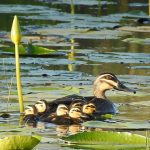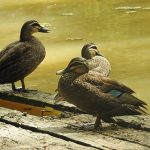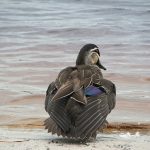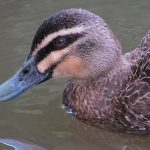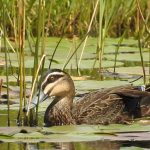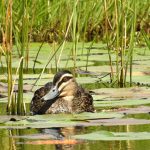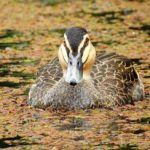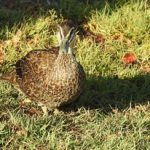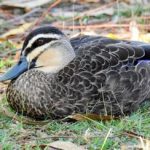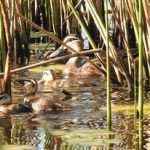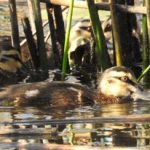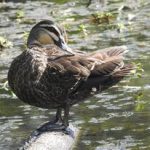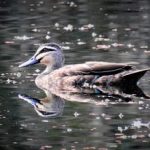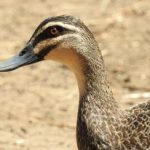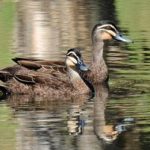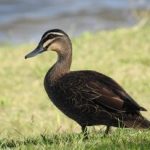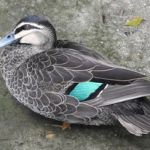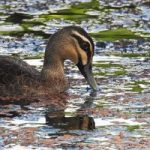PACIFIC BLACK DUCK
Pacific Black Duck.
1. Taxonomy and Naming
| Common Name | Scientific Name | Family |
|---|---|---|
| Pacific Black Duck | Anas superciliosa | Anatidae |
- The family
Anatidaecovers ducks, geese, and swans—nature’s aquatic aristocracy.
2. Distribution & Habitat
- Where: Native to Australia, New Zealand, surrounding Pacific islands.
- Habitat: Happily found in nearly any wetland—rivers, lakes, estuaries, and even city ponds.
3. Physical Description
- Size: Medium—think “not quite swan, not quite sparrow.”
- Looks:
- Dark, wood-brown plumage with pale edges
- Eye-catching dark green–to–purple speculum (that’s the iridescent patch on the wing!)
- Distinct facial markings: eye stripe, crown, and a “bandit-mask” feel
- Sex Differences: Subtle. Both sexes look similar; males get a toupee-level brighter during the breeding season.
4. Diet & Feeding
- Omnivorous: Plants, aquatic bugs, insects, and tiny fish—a true sampler plate.
- Feeding Style:
- Dabbling: Surface skimming and bum-up diving.
- Not deep divers like some duck relatives.
5. Reproductive Habits
- Nests: Hidden in vegetation near water.
- Eggs: 8–10, incubated by mum for ~28 days.
- Ducklings: Precocial—ready to rumble (and feed themselves) soon after hatching.
6. Hybridisation Woes
- Pacific black ducks often hybridise with mallards (Anas platyrhynchos), especially in urban spots.
- Consequence: Worried conservationists—hybridisation risks “watering down” the native gene pool.
7. Behaviour & Adaptation
- Urban Wildlife: Thriving in parks, golf courses, and backyard ponds.
- Famous Feature: High-pitched whistling in flight—thanks to aerodynamic wing feathers.
- Migratory Patterns: Some are homebodies; others migrate in search of better wetlands when times get dry.
8. Cultural Connections
- Indigenous Significance: Featured in many Dreamtime stories and traditional practices.
- Ecological Role: Seed dispersers, insect controllers—nature’s balancing act.
9. Conservation Notes
- Status: Not globally threatened, but hybridisation and habitat loss are causes for ongoing monitoring.

